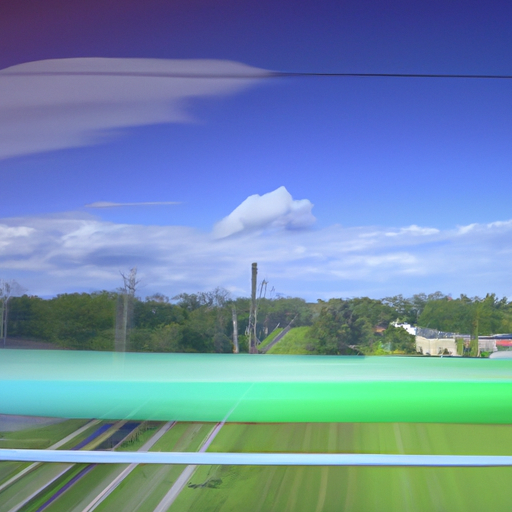Prix
-
>a>a>a>li>
- Introduction
- The History of Prix Racing
- Top 10 Most Memorable Prix Moments
- The Evolution of Prix Cars
- Famous Prix Drivers Throughout History
- The Science Behind Prix Racing
- The Future of Prix: Predictions and Speculations
- The Most Dangerous Prix Tracks in the World
- Prix Racing: A Billionaire’s Playground?
- The Impact of Technology on Prix Racing
- The Business of Prix: Sponsorship and Advertising
- The Psychology of a Prix Driver
- The Role of Women in Prix Racing
- Q&A
- Conclusion
Mobile Casino Free Bonus Best Deals & Pages
“Prix – Your one-stop-shop for affordable and stylish fashion.”
Introduction
Prix is a French phrase that interprets to “price” in English. It is often used in the context of commerce and economics to consult with the price of items or services. The time period may also be used in different contexts, resembling in the world of sports, the place it could consult with a prize or award given to a winning athlete or team. Overall, the time period prix is a versatile phrase that may be used in a variety of settings to consult with the value or price of one thing.
The History of Prix Racing
Prix racing, also called Grand Prix racing, is a form of motorsport that has been around for over a century. It is a high-pace, adrenaline-fueled competitors that has captivated audiences around the world. The historical past of Prix racing is wealthy and fascinating, and it has advanced considerably over the years.
The first Prix race was held in France in 1906, and it was a 12-hour endurance race. The race was won by Hungarian driver Ferenc Szisz, who drove a Renault AK 90CV. This race marked the starting of Prix racing, and it rapidly gained reputation in Europe.
In the early years of Prix racing, the races have been held on public roads, which have been closed off for the occasion. The cars weren’t as superior as they’re today, and security was not a top precedence. As a consequence, accidents have been frequent, and many drivers lost their lives.
Despite the risks, Prix racing continued to develop in reputation, and it grew to become a symbol of nationwide pleasure for a lot of countries. The races have been seen as a way to showcase a nation’s engineering prowess and technological developments.
In the Thirties, the guidelines of Prix racing have been modified, and the races have been held on objective-constructed tracks. This made the races safer and allowed for sooner speeds. The cars additionally grew to become more superior, with better engines, aerodynamics, and tires.
During World War II, Prix racing was placed on maintain, but it resumed in the Nineteen Fifties. This was a golden age for Prix racing, with legendary drivers like Juan Manuel Fangio, Stirling Moss, and Jim Clark dominating the sport.
In the Sixties and Seventies, Prix racing continued to evolve, with new applied sciences like aerodynamic wings and turbocharged engines being launched. The races grew to become even sooner and more exciting, and the crowds grew bigger.
In the Nineteen Eighties and Nineteen Nineties, Prix racing grew to become more commercialized, with big-name sponsors and huge tv audiences. The cars grew to become even more superior, with computerized systems and carbon fiber chassis.
Today, Prix racing is a international phenomenon, with races held in countries around the world. The cars are extremely superior, with hybrid engines, superior aerodynamics, and state-of-the-art security features.
Despite the adjustments over the years, the spirit of Prix racing stays the identical. It is a sport that celebrates pace, ability, and innovation. It is a sport that brings people collectively from throughout the world, united by their love of racing.
As we glance to the future of Prix racing, there’s a lot to be optimistic about. The sport continues to evolve, with new applied sciences and improvements being launched yearly. And as the world turns into more connected, Prix racing has the potential to succeed in even more people and encourage a new era of fans.
In conclusion, the historical past of Prix racing is a fascinating story of innovation, danger, and excitement. From its humble beginnings on public roads to its current status as a international phenomenon, Prix racing has come a long way. And as we glance to the future, we could be assured that this unimaginable sport will continue to captivate audiences around the world.
Top 10 Most Memorable Prix Moments
The world of motorsports is crammed with excitement, adrenaline, and unforgettable moments. From the roar of the engines to the scent of burning rubber, there’s nothing fairly like the thrill of a race. And when it involves the most prestigious races in the world, few occasions can compare to the Prix.
Over the years, the Prix has produced some of the most memorable moments in motorsports historical past. From epic battles on the track to heart-stopping finishes, these moments have develop into half of racing lore. Here are the top 10 most memorable Prix moments.
1. Ayrton Senna’s First Win
In 1985, a younger Brazilian driver named Ayrton Senna won his first Prix race in Portugal. It was the starting of a legendary career that might see Senna develop into one of the biggest drivers in historical past.
2. Gilles Villeneuve’s Last Win
In 1981, Canadian driver Gilles Villeneuve won his last Prix race in Spain. Tragically, Villeneuve would die in a crash throughout qualifying for the next race in Belgium.
3. Michael Schumacher’s First Win
In 1992, a younger German driver named Michael Schumacher won his first Prix race in Belgium. It was the starting of a career that might see Schumacher develop into one of the most profitable drivers in historical past.
4. Ayrton Senna’s Duel with Alain Prost
In 1988, Ayrton Senna and Alain Prost engaged in a single of the most intense duels in Prix historical past. The two drivers battled for the lead all through the race, with Senna finally coming out on top.
5. Nigel Mansell’s Last Lap Pass
In 1987, British driver Nigel Mansell made a daring last lap pass to win the Prix race in Britain. It was a thrilling second that cemented Mansell’s status as one of the sport’s greats.
6. Juan Manuel Fangio’s Five Wins
In the Nineteen Fifties, Argentine driver Juan Manuel Fangio won 5 Prix championships, a record that stood for many years. Fangio’s dominance on the track made him a legend in the sport.
7. Lewis Hamilton’s First Win
In 2007, a younger British driver named Lewis Hamilton won his first Prix race in Canada. It was the starting of a career that might see Hamilton develop into one of the most profitable drivers in historical past.
8. Jackie Stewart’s Three Championships
In the Sixties and Seventies, Scottish driver Jackie Stewart won three Prix championships, cementing his status as one of the sport’s greats. Stewart’s ability and willpower on the track made him a fan favourite.
9. Sebastian Vettel’s Four Championships
In the 2010s, German driver Sebastian Vettel won four Prix championships, establishing himself as one of the sport’s top drivers. Vettel’s ability and consistency on the track made him a force to be reckoned with.
10. Jim Clark’s Dominance
In the Sixties, Scottish driver Jim Clark dominated the Prix circuit, winning two championships and quite a few races. Clark’s ability and pace on the track made him a legend in the sport.
These are simply a few of the most memorable moments in Prix historical past. From the early days of the sport to the current day, the Prix has produced some of the most exciting and unforgettable moments in motorsports. And with new drivers and new races on the horizon, there’s no telling what the future holds for this iconic occasion.
The Evolution of Prix Cars
Prix cars have come a long way since their inception in the early twentieth century. These high-efficiency autos have been the topic of a lot fascination and admiration, with their modern designs and spectacular speeds. Over the years, the evolution of prix cars has been marked by a quantity of vital adjustments, from the introduction of new applied sciences to the growth of new racing codecs.
One of the most notable adjustments in the evolution of prix cars has been the introduction of new supplies and applied sciences. In the early days of racing, cars have been made primarily of steel and different heavy metals, which made them sluggish and cumbersome. However, as new supplies resembling aluminum and carbon fiber grew to become accessible, designers have been capable of create lighter and more aerodynamic cars that would attain larger speeds.
Another main growth in the evolution of prix cars has been the introduction of new security features. In the early days of racing, drivers have been usually at risk of severe injury and even death on account of the lack of security equipment. However, as the sport grew to become more popular and more dangerous, security features resembling roll cages, hearth suppression systems, and affect-absorbing supplies have been launched to guard drivers from hurt.
In addition to those technological developments, the evolution of prix cars has additionally been marked by adjustments in racing codecs. In the early days of racing, occasions have been usually held on closed circuits or public roads, with drivers competing in opposition to one another in a single race. However, as the sport grew in reputation, new codecs resembling endurance racing and rally racing have been launched, which required drivers to compete over longer distances and in more difficult conditions.
Despite these adjustments, one factor that has remained fixed all through the evolution of prix cars is the ardour and dedication of the drivers and teams who compete in these occasions. Whether they’re racing for glory or simply for the love of the sport, these people are pushed by a desire to push themselves and their machines to the restrict, and to attain the highest ranges of efficiency and success.
Looking to the future, it is evident that the evolution of prix cars will continue to be formed by new applied sciences and improvements. From electrical and hybrid powertrains to superior driver help systems, there are a huge range of new applied sciences which can be poised to revolutionize the sport of racing in the years to return.
Despite the challenges that lie forward, nonetheless, there’s cause to be optimistic about the future of prix cars. With their combination of pace, power, and precision, these autos continue to captivate audiences around the world, and to encourage a new era of drivers and engineers to push the boundaries of what is feasible.
In the finish, the evolution of prix cars is a testomony to the power of human ingenuity and innovation. From the early days of racing to the current day, these autos have been at the forefront of technological progress, and have helped to shape the course of automotive historical past. As we glance to the future, it is evident that the legacy of prix cars will continue to encourage and captivate us for generations to return.
Famous Prix Drivers Throughout History
Prix racing has been a popular sport for over a century, with drivers from throughout the world competing for the top spot. Throughout historical past, there have been many famous Prix drivers who’ve made a name for themselves in the sport. These drivers haven’t only achieved nice success on the track but have additionally develop into legends in the world of motorsports.
One of the most famous Prix drivers of all time is Ayrton Senna. Senna was a Brazilian driver who won three Formula One World Championships throughout his career. He was recognized for his unimaginable pace and ability on the track, as well as his dedication to the sport. Senna tragically died in a crash throughout the 1994 San Marino Grand Prix, but his legacy lives on as one of the biggest drivers of all time.
Another famous Prix driver is Michael Schumacher. Schumacher is a German driver who won seven Formula One World Championships throughout his career. He is thought for his unimaginable consistency and means to carry out beneath stress. Schumacher retired from racing in 2012 but stays one of the most profitable drivers in the historical past of the sport.
Juan Manuel Fangio is another famous Prix driver who is taken into account one of the biggest of all time. Fangio won 5 Formula One World Championships throughout his career and was recognized for his unimaginable ability and precision on the track. He retired from racing in 1958 but stays a legend in the world of motorsports.
Lewis Hamilton is a current Prix driver who’s making historical past in the sport. Hamilton is a British driver who has won seven Formula One World Championships, tying him with Schumacher for the most championships in historical past. He is thought for his unimaginable pace and ability on the track, as well as his dedication to social justice and activism off the track.
These famous Prix drivers are simply a few examples of the unimaginable talent that has graced the sport over the years. Each driver has their own unique style and strategy to racing, but all of them share a ardour for the sport and a dedication to excellence.
Prix racing is a sport that requires not only ability and talent but additionally a deep understanding of the mechanics of the car and the track. Drivers should have the ability to make break up-second choices and react rapidly to altering conditions on the track. They should additionally have the ability to work intently with their team to make changes to the car and develop a strategy for every race.
Despite the challenges of the sport, Prix drivers stay optimistic and devoted to their craft. They are consistently pushing themselves to enhance and obtain higher success on the track. They are additionally dedicated to selling the sport and inspiring the next era of drivers.
In conclusion, Prix racing has a wealthy historical past crammed with famous drivers who’ve made a lasting affect on the sport. These drivers haven’t only achieved nice success on the track but have additionally develop into legends in the world of motorsports. Their dedication, ability, and ardour for the sport continue to encourage fans and aspiring drivers around the world. As the sport continues to evolve and develop, we are able to stay up for seeing even more gifted drivers make their mark on the world of Prix racing.
The Science Behind Prix Racing
Prix racing is a thrilling and exciting sport that has captured the hearts of millions of people around the world. It is a high-pace, high-stakes competitors that requires ability, precision, and a deep understanding of the science behind the sport.
At its core, prix racing is all about physics. The cars that race around the track are finely tuned machines which can be designed to maximise pace and efficiency. Every facet of the car, from the engine to the tires, is fastidiously engineered to make sure that it can go as fast as attainable whereas nonetheless sustaining control.
One of the most important components in prix racing is aerodynamics. The shape of the car and the way that air flows over it can have a huge affect on its pace and dealing with. Engineers spend numerous hours designing and testing totally different shapes and configurations to seek out the perfect balance between pace and stability.
Another key consider prix racing is tire expertise. The tires on a prix car are specifically designed to provide maximum grip and traction, even at high speeds. They are created from superior supplies that may stand up to the excessive forces and temperatures which can be generated throughout a race.
But it’s not simply the cars themselves which can be important in prix racing. The drivers additionally play a essential function in the sport. They should have lightning-fast reflexes and an intimate understanding of the physics behind the car’s actions. They should have the ability to make break up-second choices and react rapidly to altering conditions on the track.
In addition to the bodily elements of the sport, there’s additionally a vital amount of strategy concerned in prix racing. Teams should fastidiously analyze knowledge from practice classes and earlier races to find out the greatest strategy for every race. They should contemplate components resembling track conditions, climate, and the efficiency of their opponents.
Despite the many challenges concerned in prix racing, it stays an extremely popular and exciting sport. Fans around the world tune in to watch the races and cheer on their favourite drivers and teams. And with advances in expertise and engineering, the sport is only getting sooner and more thrilling with every passing 12 months.
In conclusion, prix racing is a fascinating and advanced sport that requires a deep understanding of physics, engineering, and strategy. From the finely tuned cars to the lightning-fast reflexes of the drivers, each facet of the sport is designed to maximise pace and efficiency. And with its international reputation and ever-growing pace and excitement, it’s clear that prix racing will continue to captivate audiences for years to return.
The Future of Prix: Predictions and Speculations
Prix, the French phrase for price, has been a essential facet of the economic system for hundreds of years. It is the value assigned to items and services, and it plays a vital function in figuring out the success of companies and the buying power of customers. As we transfer in direction of a more digital and globalized world, the future of prix is consistently evolving. In this article, we will discover some predictions and speculations about the future of prix.
One of the most vital adjustments we are able to anticipate in the future of prix is the rise of customized pricing. With the assist of big knowledge and synthetic intelligence, companies can now analyze consumer conduct and tailor prices to particular person customers. This implies that two people buying the identical product could pay totally different prices based on their buying historical past, location, and different components. While this could appear unfair, it can even profit customers who’re keen to share their knowledge and receive customized reductions.
Another pattern we are able to anticipate in the future of prix is the growing significance of sustainability. As customers develop into more conscious of the environmental affect of their purchases, they’re keen to pay more for eco-pleasant merchandise and services. This implies that companies that prioritize sustainability will have a aggressive benefit in the market. We can even anticipate governments to introduce insurance policies that encourage sustainable practices and penalize companies that don’t comply.
The future of prix can also be prone to be influenced by the rising reputation of cryptocurrencies. While nonetheless a comparatively new idea, cryptocurrencies like Bitcoin and Ethereum have already disrupted conventional financial systems. They provide a decentralized and secure way of conducting transactions, which might doubtlessly eradicate the want for intermediaries like banks and credit card companies. As more companies and customers undertake cryptocurrencies, we are able to anticipate to see adjustments in the way prices are decided and paid for.
Another issue that will shape the future of prix is the growing use of automation and robotics in manufacturing and service industries. As machines substitute human labor, the price of manufacturing could lower, resulting in decrease prices for customers. However, this might additionally result in job losses and revenue inequality, which might have a destructive affect on the economic system as a entire. It will be important for governments and companies to seek out ways to balance the advantages of automation with the wants of workers.
Finally, the future of prix is prone to be influenced by geopolitical components resembling trade agreements and tariffs. As countries negotiate new trade deals and impose tariffs on imports, the price of items and services could fluctuate. This might have a vital affect on companies that depend on international trade, as well as customers who could should pay more for imported merchandise.
In conclusion, the future of prix is consistently evolving, and we are able to anticipate to see many adjustments in the coming years. Personalized pricing, sustainability, cryptocurrencies, automation, and geopolitical components are simply a few of the traits that will shape the way prices are decided and paid for. While some of these adjustments could current challenges, there’s additionally cause to be optimistic about the future of prix. As expertise and innovation continue to advance, we may even see a more environment friendly and equitable pricing system that advantages each companies and customers.
The Most Dangerous Prix Tracks in the World
Prix racing is one of the most thrilling and exciting sports in the world. The adrenaline rush that comes with watching these high-pace machines zoom previous you is unmatched. However, with nice pace comes nice danger. The tracks on which these races take place could be treacherous and unforgiving. In this article, we will take a have a look at some of the most dangerous Prix tracks in the world.
First on our checklist is the Circuit de la Sarthe in Le Mans, France. This track is thought for its long straights and high-pace corners. The most dangerous half of the track is the Mulsanne Straight, which is over 6 kilometers long. Drivers can attain speeds of as much as 400 km/h on this straight, making it one of the fastest sections of any Prix track. The danger comes from the undeniable fact that there aren’t any chicanes or different obstacles to decelerate the cars. If a driver loses control at this pace, the penalties could be catastrophic.
Next up is the Nürburgring in Germany. This track is famous for its long and winding layout, which contains over 170 corners. The track can also be recognized for its unpredictable climate conditions, which can change quickly and catch drivers off guard. The most dangerous half of the track is the Flugplatz part, which is a high-pace bounce that may trigger cars to develop into airborne. If a driver loses control whereas in the air, the penalties could be lethal.
Moving on to the Suzuka Circuit in Japan, which is thought for its difficult layout and high-pace corners. The most dangerous half of the track is the 130R corner, which is a high-pace left-hand turn that requires drivers to take care of their pace whereas navigating a tight radius. If a driver loses control at this pace, the penalties could be catastrophic.
Another dangerous track is the Circuit de Spa-Francorchamps in Belgium. This track is thought for its high-pace corners and unpredictable climate conditions. The most dangerous half of the track is the Eau Rouge part, which is a high-pace uphill corner that requires drivers to take care of their pace whereas navigating a blind crest. If a driver loses control at this pace, the penalties could be lethal.
Last but not least is the Circuit Gilles Villeneuve in Canada. This track is thought for its tight corners and unforgiving partitions. The most dangerous half of the track is the Wall of Champions, which is a part of the track that has claimed many victims over the years. The wall is situated at the exit of the last chicane and is thought for catching out even the most skilled drivers.
Despite the risks of these tracks, Prix racing stays one of the most popular and exciting sports in the world. The drivers who compete in these races are some of the bravest and most expert athletes in the world. They push themselves and their machines to the restrict, understanding that one mistake might price them their lives.
In conclusion, Prix racing is a dangerous sport, and the tracks on which these races take place could be treacherous and unforgiving. However, the thrill and excitement that come with watching these high-pace machines zoom previous you are unmatched. The drivers who compete in these races are some of the bravest and most expert athletes in the world. They push themselves and their machines to the restrict, understanding that one mistake might price them their lives. Despite the risks, Prix racing stays one of the most popular and exciting sports in the world.
Prix Racing: A Billionaire’s Playground?
Prix Racing: A Billionaire’s Playground?
Prix racing is a high-pace, adrenaline-fueled sport that has captured the hearts of many. It is a sport that requires ability, precision, and a lot of cash. The price of collaborating in prix racing is astronomical, and it is usually seen as a sport for the rich. But is it really simply a billionaire’s playground?
Prix racing is a sport that has been around for over a century. It started in France in the early 1900s and has since unfold to different parts of the world. The sport entails racing high-efficiency cars around a track at breakneck speeds. The cars used in prix racing are some of the most superior machines in the world, with engines that may produce over 1,000 horsepower.
The price of collaborating in prix racing is extremely high. The cars used in the sport can price millions of dollars, and the price of sustaining them can also be very high. In addition to the price of the cars, there are additionally the costs of journey, lodging, and different bills associated with collaborating in the sport.
Despite the high price of collaborating in prix racing, it is not only a sport for the rich. There are many drivers who come from humble backgrounds and have labored hard to make it to the top of the sport. These drivers usually depend on sponsorships and different kinds of support to assist them finance their racing careers.
One of the most famous drivers in the historical past of prix racing is Michael Schumacher. Schumacher got here from a modest background and labored his way up by means of the ranks of the sport to develop into one of the most profitable drivers of all time. He won seven world championships and is extensively thought to be one of the biggest drivers in the historical past of the sport.
Another driver who has made a name for himself in prix racing is Lewis Hamilton. Hamilton is at present the most profitable driver in the historical past of the sport, with seven world championships to his name. Like Schumacher, Hamilton got here from a humble background and labored his way up by means of the ranks of the sport.
While it is true that many of the drivers in prix racing come from rich backgrounds, there are additionally many who don’t. The sport is open to anyone who has the talent and the drive to succeed. There are many younger drivers who’re working hard to make it to the top of the sport, and they arrive from all walks of life.
In current years, there was a push to make prix racing more accessible to a wider viewers. The sport has historically been seen as elitist, but there at the moment are efforts to make it more inclusive. One of the ways this is being done is by introducing new classes of racing which can be more affordable and accessible to a wider range of drivers.
In conclusion, whereas it is true that prix racing is a sport that requires a lot of cash, it is not only a billionaire’s playground. There are many drivers who come from humble backgrounds and have labored hard to make it to the top of the sport. Prix racing is a sport that’s open to anyone who has the talent and the drive to succeed, and there at the moment are efforts being made to make it more accessible to a wider viewers. Prix racing is a thrilling and exciting sport that will continue to seize the hearts of fans around the world for a few years to return.
The Impact of Technology on Prix Racing
Prix racing has been a popular sport for many years, attracting millions of fans from throughout the world. The thrill of watching high-pace cars zoom previous one another on the track is unmatched. However, with the advent of expertise, the sport has undergone a vital transformation. The affect of expertise on prix racing has been immense, and it has modified the way the sport is played, watched, and loved.
One of the most vital impacts of expertise on prix racing is the introduction of superior security measures. In the previous, accidents on the track have been frequent, and drivers have been at risk of severe injury and even death. However, with the use of superior security features resembling roll cages, hearth suppression systems, and affect-absorbing supplies, the risk of accidents has been considerably diminished. This has made the sport safer for drivers and has additionally elevated the confidence of fans in the sport.
Another vital affect of expertise on prix racing is the use of knowledge analytics. Teams now use superior knowledge analytics instruments to investigate each facet of the car’s efficiency, from tire put on to gasoline consumption. This knowledge is then used to make knowledgeable choices about car setup, strategy, and pit stops. This has led to more environment friendly and efficient racing, with teams capable of make better choices based on real-time knowledge.
Technology has additionally had a vital affect on the design and building of cars. The use of superior supplies resembling carbon fiber has made cars lighter and more aerodynamic, leading to sooner lap times. The use of hybrid engines has additionally made cars more gasoline-environment friendly, lowering the environmental affect of the sport. These developments haven’t only improved the efficiency of cars but have additionally made them more sustainable.
The affect of expertise on prix racing shouldn’t be limited to the track. The use of social media and digital platforms has remodeled the way fans have interaction with the sport. Fans can now observe their favourite teams and drivers on social media, watch races online, and even take part in virtual races. This has made the sport more accessible to fans throughout the world, growing its reputation and attain.
The use of expertise has additionally led to the growth of new kinds of racing. Formula E, for instance, is a new form of racing that makes use of electrical cars. This has not only made the sport more sustainable but has additionally attracted a new era of fans who’re keen about environmental points. The use of virtual actuality expertise has additionally led to the growth of virtual racing, the place fans can expertise the thrill of racing from the consolation of their own houses.
In conclusion, the affect of expertise on prix racing has been immense. It has remodeled the way the sport is played, watched, and loved. From superior security measures to knowledge analytics, from sustainable cars to new kinds of racing, expertise has made the sport safer, more environment friendly, and more accessible. While some could argue that expertise has taken away from the conventional elements of the sport, the total affect has been optimistic. The future of prix racing appears to be like bright, and expertise will undoubtedly continue to play a vital function in its evolution.
The Business of Prix: Sponsorship and Advertising
Prix, or motorsport racing, is a thrilling and exciting sport that has captivated audiences for many years. From the roar of the engines to the adrenaline-fueled action on the track, it’s no marvel that so many people are drawn to this high-octane sport. But behind the scenes, there’s a entire different world of business that retains the wheels turning.
One of the most important elements of the business of prix is sponsorship. Without sponsors, many teams and drivers would wrestle to compete at the highest degree. Sponsors provide the financial backing that permits teams to spend money on the latest expertise and equipment, as well as pay for journey bills and different costs associated with competing in races around the world.
But sponsorship is not nearly cash. It’s additionally about publicity. Sponsors wish to be associated with winning teams and profitable drivers, as this helps to construct their model and enhance their visibility. This is why you’ll usually see logos and branding on the cars themselves, as well as on the drivers’ uniforms and helmets.
In addition to sponsorship, promoting is another key element of the business of prix. From billboards to TV commercials, there are numerous opportunities for companies to promote their merchandise and services to a international viewers. And with millions of people tuning in to watch every race, the potential for publicity is huge.
But promoting in prix is not nearly getting your model in entrance of as many people as attainable. It’s additionally about creating a connection with fans. Many companies use promoting to showcase their support for the sport and its fans, as well as to focus on their dedication to innovation and expertise.
Of course, there are challenges to the business of prix as well. With so many teams and drivers vying for sponsorship and promoting opportunities, competitors could be fierce. And with the high costs associated with competing at the highest degree, it could be difficult for smaller teams to keep up.
But regardless of these challenges, the future of the business of prix appears to be like bright. With new applied sciences like electrical and hybrid engines, there are exciting opportunities for innovation and progress. And with a international viewers that’s keen about the sport, there’s no scarcity of potential for sponsors and advertisers to become involved.
In conclusion, the business of prix is a advanced and dynamic world that’s important to the success of the sport. From sponsorship to promoting, there are numerous opportunities for companies to become involved and make a distinction. And with the continued progress and evolution of the sport, there’s no telling what the future holds. So whether or not you’re a fan, a sponsor, or an advertiser, there’s by no means been a better time to become involved in the world of prix.
The Psychology of a Prix Driver
Prix racing is a sport that requires a unique set of abilities and psychological fortitude. The drivers who compete in these high-pace races should possess a combination of bodily and psychological skills that allow them to navigate the track at unimaginable speeds whereas sustaining focus and control. The psychology of a prix driver is a fascinating topic, and understanding the mindset of these athletes can provide helpful insights into the nature of competitors and success.
One of the key traits of a profitable prix driver is the means to stay calm beneath stress. These drivers are sometimes confronted with intense conditions that require break up-second choices and lightning-fast reflexes. In order to carry out at their greatest, they have to have the ability to keep focused and composed, even in the face of excessive danger. This requires a nice deal of psychological self-discipline and the means to control one’s feelings.
Another important facet of the psychology of a prix driver is their means to visualise success. These drivers should have the ability to see themselves winning the race, even before they step into the car. This visualization method helps them to remain motivated and focused on their targets, even when confronted with setbacks or obstacles. By visualizing success, they’re able to keep a optimistic perspective and keep dedicated to their coaching and preparation.
Prix drivers additionally have to be highly aggressive people. They thrive on the challenge of racing in opposition to different expert drivers and are consistently striving to enhance their efficiency. This aggressive drive is what pushes them to coach more durable, take dangers, and push themselves to the restrict. However, this aggressive nature may also be a double-edged sword, as it can result in frustration and disappointment when issues don’t go as deliberate.
In addition to those psychological traits, profitable prix drivers additionally must have a robust bodily basis. They should be in excellent bodily condition in order to deal with the bodily calls for of racing at high speeds for prolonged durations of time. This requires a rigorous coaching routine that features cardiovascular train, power coaching, and flexibility work. By sustaining a robust bodily basis, drivers are capable of carry out at their greatest and keep away from injury.
Finally, the psychology of a prix driver additionally entails a robust sense of teamwork. While the driver is the one who finally crosses the end line, they’re supported by a team of mechanics, engineers, and different professionals who work behind the scenes to make sure that the car is in top condition. This team dynamic requires robust communication abilities, belief, and a willingness to work collectively in direction of a frequent purpose. Without this sense of teamwork, even the most gifted driver will wrestle to succeed.
In conclusion, the psychology of a prix driver is a advanced and multifaceted topic. These athletes should possess a unique combination of psychological and bodily skills in order to reach this highly aggressive sport. By remaining calm beneath stress, visualizing success, sustaining a aggressive drive, staying bodily match, and working as half of a team, prix drivers are capable of obtain their targets and attain the pinnacle of their sport.
The Role of Women in Prix Racing
Prix racing is a sport that has been dominated by males for a few years. However, in current times, girls have started to make their mark in this area. The function of girls in prix racing has been growing steadily, and they’re now an integral half of the sport.
One of the most vital contributions of girls to prix racing is their means to carry variety to the sport. Women carry a totally different perspective to the sport, and this has helped to make it more inclusive. They have additionally helped to break down the stereotypes which were associated with the sport for a few years.
Another important function that girls play in prix racing is that of function fashions. Women who take part in the sport encourage different girls to take up the sport and pursue their dreams. They present that it is feasible for ladies to reach a male-dominated area and that gender shouldn’t be a barrier to success.
Women have additionally introduced a new degree of competitiveness to prix racing. They have proven that they’re simply as succesful as males when it involves driving fast cars and competing at the highest degree. This has helped to boost the degree of competitors in the sport and has made it more exciting for fans.
One of the most vital achievements of girls in prix racing is the institution of all-female racing teams. These teams have offered a platform for ladies to showcase their abilities and compete at the highest degree. They have additionally helped to create a sense of neighborhood among female racers and have offered a support system for ladies who’re simply starting out in the sport.
The success of girls in prix racing has not gone unnoticed, and many organizations have started to take discover. There at the moment are more opportunities for ladies to take part in the sport, and there are more resources accessible to assist them succeed. This has helped to degree the playing area and has made it attainable for ladies to compete on an equal footing with males.
Despite the progress that has been made, there’s nonetheless a long way to go when it involves gender equality in prix racing. Women nonetheless face many challenges, including discrimination and a lack of opportunities. However, the progress that has been made thus far is a trigger for optimism, and it is evident that girls will continue to play an important function in the sport in the years to return.
In conclusion, the function of girls in prix racing has been growing steadily over the years. Women have introduced variety, competitiveness, and a new degree of excitement to the sport. They have additionally served as function fashions for different girls and have helped to break down the stereotypes which were associated with the sport for a few years. While there’s nonetheless a long way to go when it involves gender equality in prix racing, the progress that has been made thus far is a trigger for optimism, and it is evident that girls will continue to play an important function in the sport in the years to return.
Q&A
1. What is Prix?
Prix is a French phrase meaning “price” in English.
2. What is Prix Fixe?
Prix Fixe is a French time period that refers to a fastened price menu in a restaurant.
3. What is Prix Goncourt?
Prix Goncourt is a prestigious French literary award given yearly to the greatest work of fiction in the French language.
4. What is Prix de Rome?
Prix de Rome is a scholarship awarded to younger artists and musicians to check in Rome, Italy.
5. What is Prix de l’Arc de Triomphe?
Prix de l’Arc de Triomphe is a famous horse race held yearly in Paris, France.
6. What is Prix Italia?
Prix Italia is an international competitors for radio, tv, and web productions.
7. What is Prix Europa?
Prix Europa is an annual competitors for the greatest European tv, radio, and online productions.
8. What is Prix de Lausanne?
Prix de Lausanne is an international ballet competitors held yearly in Lausanne, Switzerland.
9. What is Prix Jean Vigo?
Prix Jean Vigo is a French film award given yearly to the greatest director of a French film.
10. What is Prix Ars Electronica?
Prix Ars Electronica is an international competitors for digital art and media.
11. What is Prix Pictet?
Prix Pictet is a international pictures prize that focuses on environmental and sustainability points.
12. What is Prix Versailles?
Prix Versailles is an international structure and design award that acknowledges excellence in industrial and public areas.
Conclusion
Conclusion: Prix is a French phrase meaning “price” in English. It is often used in the context of commerce and trade to consult with the price of items or services. The time period may also be used in a more summary sense to consult with the value or price of one thing. Overall, Prix is an important idea in the world of business and economics, and understanding its that means and implications is crucial for anyone concerned in these fields.









